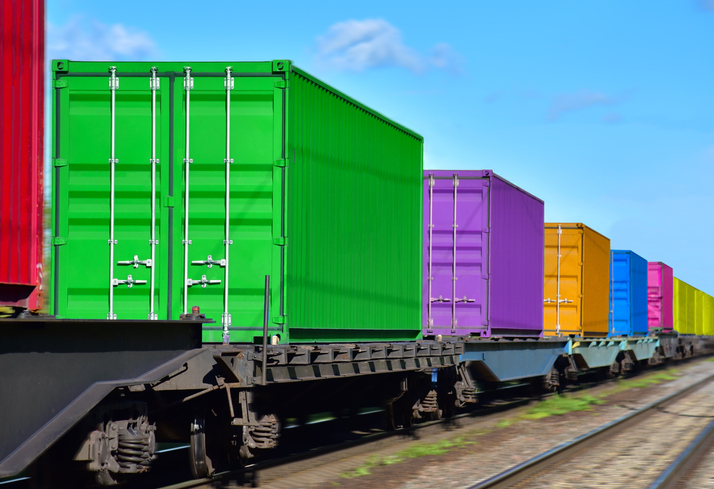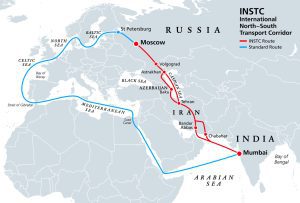
To unlock Middle-East trade potential, India should up its game in INSTC corridor
New Delhi shouldn’t let China’s success in brokering Saudi-Iran peace to scuttle a project it co-founded

China’s stunning success on March 10, 2023 in brokering peace between arch rivals Saudi Arabia and Iran after decades of enmity — leading to a formal cutting of ties in 2016 — could upset India’s strategic interests in the Middle East, especially in the ambitious International North South Transport Corridor (INSTC).
Announced in September 2000 at the Euro-Asian Conference on Transport, by India, Russia and Iran in St Petersburg (Russia), this 7,200-km long multi-modal transport corridor is primarily meant to speed up movement of goods between South Asia (from Mumbai port), through Iran to and from Russia, the CIS/European countries.

While India, Russia and Iran remain the founding members, INSTC was soon expanded to include 11 other countries: Azerbaijan, Armenia, Kazakhstan, Kyrgyzstan, Turkey, Tajikistan, Ukraine, Oman, Syria and Belarus. Bulgaria has ‘observer’ status.
Slow progress
Progress on the project has been painfully slow. In July 2022, the first commercial consignment transported in containers from Astrakhan port in southern Russia through Iran’s Anzali port in the north and Bandar Abbas port in the south of the country, reached Mumbai’s Nhava Sheva port, also known as Jawaharlal Nehru Port, establishing INSTC’s viability.
Opinion: Advantage China in West Asia as US obsesses over bleeding Russia
In addition to this main or central corridor, INSTC will have a western railway corridor connecting Azerbaijan to Iran and then to Mumbai port. There’s also an eastern corridor to connect Russia to India through Kazakhstan, Uzbekistan and Turkmenistan.
One of the prerequisites for the success of this project is seamless rail freight connectivity along each of the three corridors and between them. This is now missing, though Iran and the Central Asian countries are separately as well as jointly executing several rail projects aimed at providing this sorely needed rail connectivity within INSTC.
India wants the Chabahar port in eastern Iran, in which it is investing, to be included in INSTC. But it has been dragging its feet on providing funding for the rail link from Chabahar to Zahedan on the border with Afghanistan. New Delhi wants Afghanistan also to be included in INSTC.
Presumably disappointed with what it sees as India’s lack of seriousness in the project, Iran has invited Pakistan to include (China-funded) Gwadar port in the INSTC. Gwadar port lies just 76 nautical miles to the east of Chabahar and Iran considers these two ports as ‘twin sisters’. Gwadar port is part of the China-Pakistan Economic Corridor.
Why is India wary?
India’s apparent reluctance to fund INSTC projects is probably because New Delhi is wary of the tough (unilateral) US sanctions imposed by then President Donald Trump against Iran. Clearly, China has no such inhibitions, going by its surging imports of Iran crude oil (according to a Bloomberg report dated January 20, 2023) masked as imports from Malaysia.
Opinion: Nepal’s chronic instability a huge worry for India; is Delhi doing enough?
Dismissive of US sanctions, China is further entrenching itself in Iran. In 2021, both countries signed a 25-year cooperation agreement that could see China investing around $400 billion in Iran, in exchange for a steady supply of discounted oil to fuel its growing economy. It’s unsure how much of this proposed massive investment will actually fructify, but this combined with Beijing’s success in brokering peace between Teheran and Riyadh sends a clear message that China aims to play a major role in the region.
Iran has also invited China to invest in INSTC. Beijing certainly has deeper pockets and is quicker on its feet than New Delhi, but India should shed its wariness of US sanctions and deepen as well as broaden its engagement with INSTC projects. Otherwise, India risks being overshadowed or even edged out by China in a project where it is one of the promoters.
INSTC matters more now
For India, the INSTC is now more crucial than ever before. This year, India holds the presidency of the Shanghai Cooperation Organisation (SCO). Then, the current geopolitical turmoil and the decoupling of Russia and the West – in the wake of Russia’s February 2022 invasion of Ukraine – presents an opportunity for India and INSTC.
India has a lot to gain once there is seamless rail freight connectivity through Iran for INSTC. Mumbai could then become an Asian transshipment hub for goods to Europe, competing with hubs in China, especially when Western companies want to decrease their dependence on China and move their production to other parts of Asia. If INSTC’s full potential as a seamless transportation corridor is likely to be realised, India could also attract a significant chunk of the export-oriented manufacturing activities that are looking to move out of China.
Opinion: What Air India’s deal to buy 470 aircraft tells free-market fundamentalists
INSTC significantly reduces transportation time and costs. According to a 2014 study by the Federation of Freight Forwarders’ Association of India (FFAI), transporting goods through INSTC is 30% cheaper and 40% faster than through the traditional Suez Canal route. So, transit time is an average of 23 days for Europe-bound shipments through INSTC, from the 45 to 60 days taken through the Suez route.
Therefore, INSTC opens up, for India, quicker and cheaper access to markets in Europe, Russia and Central Asian countries. At the same time, hydrocarbons and other mineral resources from the mostly land-locked Central Asian countries will be easily accessible to India’s rapidly growing economy.
INSTC will also make it faster and cheaper for India to import fertilisers, steel and coal from Russia and Ukraine. Cheaper coal imports through this route could give India a leverage while purchasing coal from traditional suppliers Australia and Indonesia.
A strong push by India to the INSTC now will be a strategic step to protect and advance New Delhi’s interests in the Middle East. It will also attract significant amounts of foreign direct investment (FDI) to the country and establish Mumbai port as an Asian transhipment hub.
(Madhu Nainan is based in Mumbai and is editor of the newsletter ‘Petrowatch’. He has worked with several newspapers and news agency AFP.)
(The Federal seeks to present views and opinions from all sides of the spectrum. The information, ideas or opinions in the articles are of the author and do not necessarily reflect the views of The Federal)


